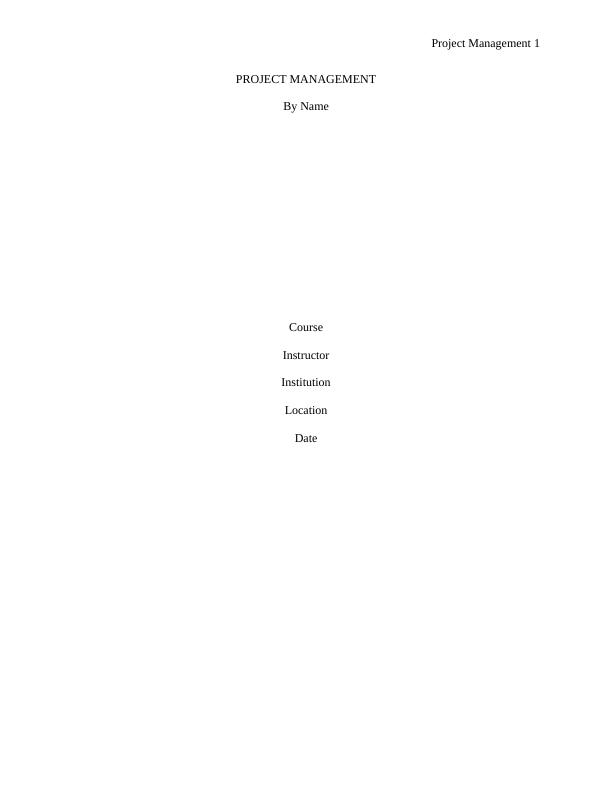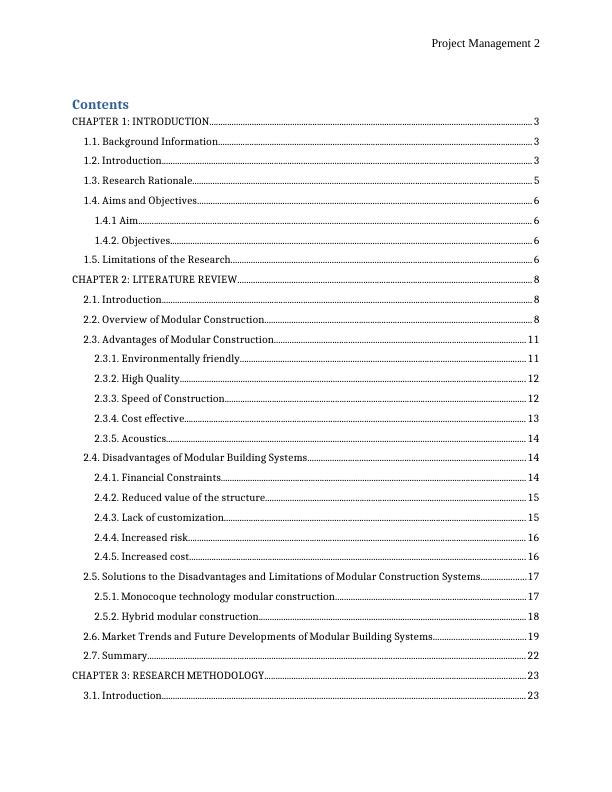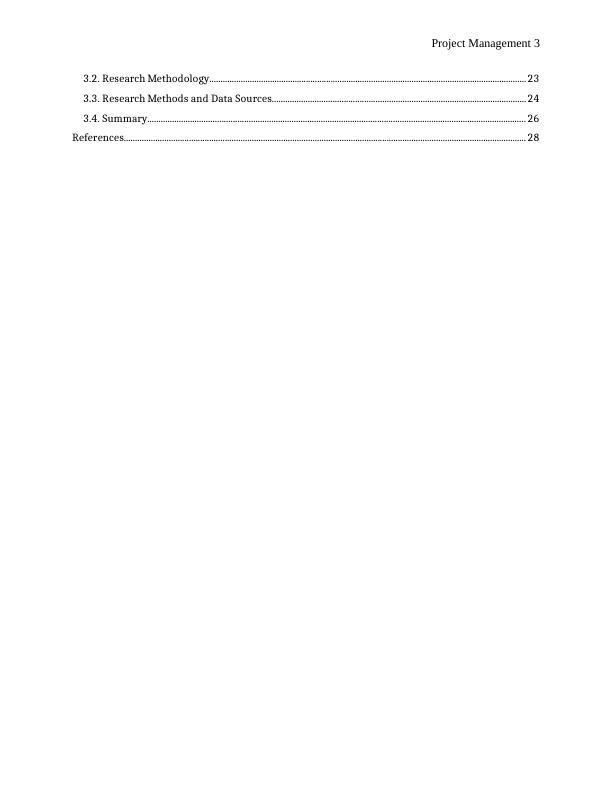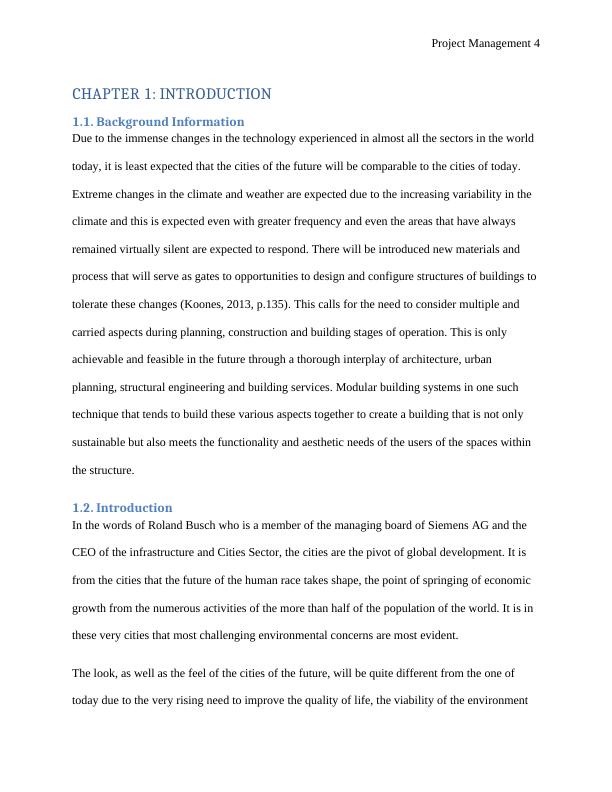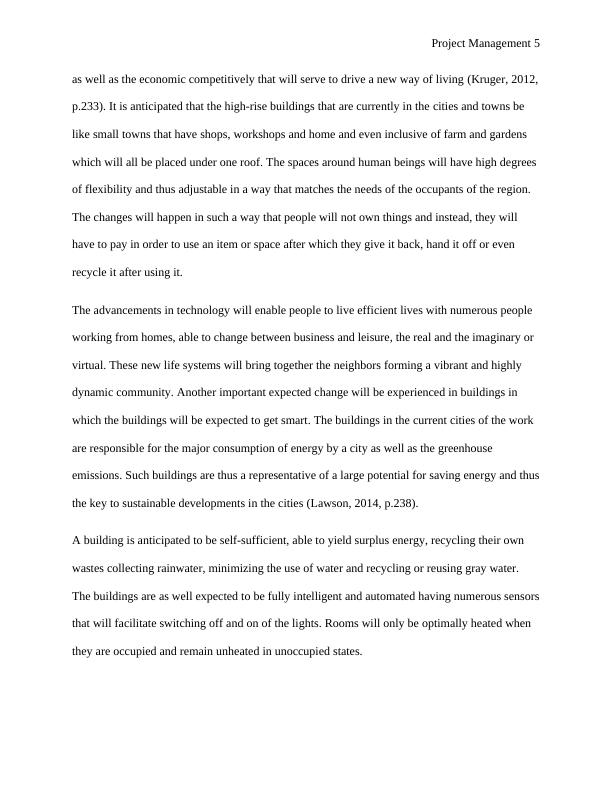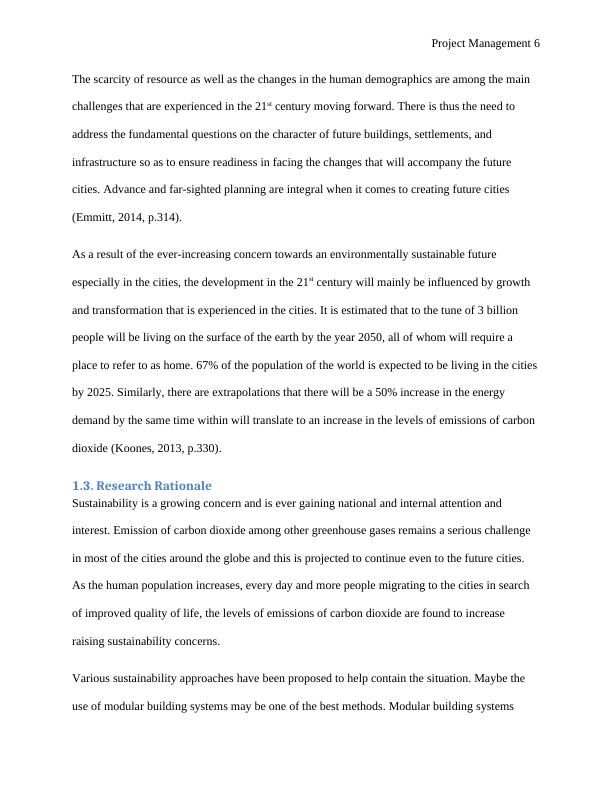Modular Construction for Future Cities: Advantages, Disadvantages, and Solutions
This assessment tests your achievement of the following Course and Program Learning Outcomes: Course Learning Outcomes: • Identify a research problem • Systematically undertake a research inquiry which meets established ethical guidelines and principles • Analyse and synthesise relevant literature and produce a literature review • Select and apply an appropriate research methodology • Plan an approach to primary and/or secondary data collection Program Learning Outcomes: • Determine and apply discipline and theoretical knowledge to your professional practice and/or further study • Professionally communicate to a range of audiences utilising diverse formats and strategies, demonstrating in depth knowledge of the discipline and responsiveness to the needs of diverse stakeholders • Apply logical, critical and creative thinking to analyse, synthesise and apply theoretical knowledge, and technical skills, to formulate evidenced based solutions to industry problems or issues • Utilise appropriate methods and techniques to design and /or execute a theory research based or professionally- focused research project demonstrating capacity forindependent and collaborative learning, addressing real world industry issues
Added on 2023-06-14
About This Document
Modular Construction for Future Cities: Advantages, Disadvantages, and Solutions
This assessment tests your achievement of the following Course and Program Learning Outcomes: Course Learning Outcomes: • Identify a research problem • Systematically undertake a research inquiry which meets established ethical guidelines and principles • Analyse and synthesise relevant literature and produce a literature review • Select and apply an appropriate research methodology • Plan an approach to primary and/or secondary data collection Program Learning Outcomes: • Determine and apply discipline and theoretical knowledge to your professional practice and/or further study • Professionally communicate to a range of audiences utilising diverse formats and strategies, demonstrating in depth knowledge of the discipline and responsiveness to the needs of diverse stakeholders • Apply logical, critical and creative thinking to analyse, synthesise and apply theoretical knowledge, and technical skills, to formulate evidenced based solutions to industry problems or issues • Utilise appropriate methods and techniques to design and /or execute a theory research based or professionally- focused research project demonstrating capacity forindependent and collaborative learning, addressing real world industry issues
Added on 2023-06-14
End of preview
Want to access all the pages? Upload your documents or become a member.

